Are you looking for an effective way to restore the look of your flooring? Removing sealer from floors is an important step in maintaining the condition of your surfaces. Unfortunately, it can often be a daunting task that seems difficult and time-consuming. But don’t worry, it doesn’t have to be!
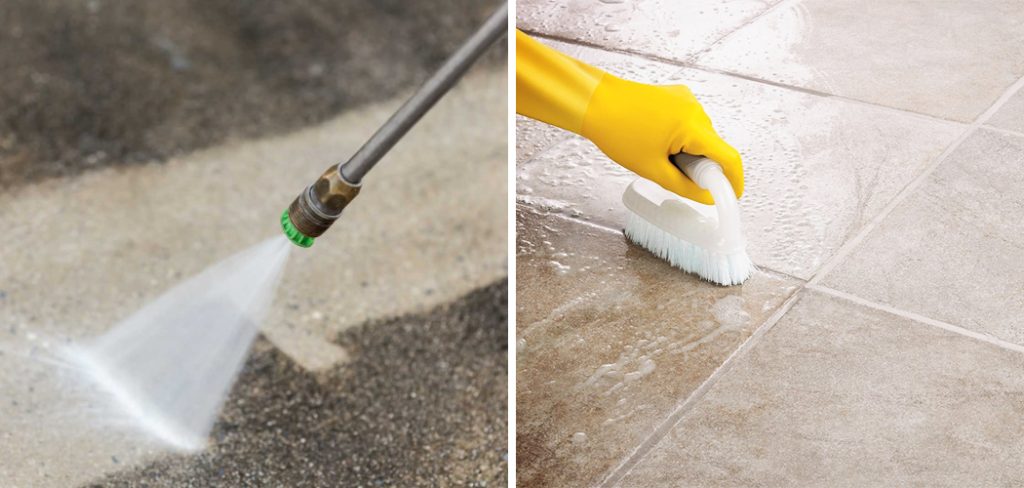
With our helpful guide on how to remove sealer from floors, we’ll simplify the process so you can get back to enjoying your beautiful floors in no time at all.
Supplies You Will Need to Remove Sealer From Floor
1. Scraper or Putty Knife
2. Floor Stripper Solution
3. Bucket
4. Sponge or Mop
5. Clean Water
6. Protective Gear (Gloves, Goggles, etc.)
Step-by-step Guidelines on How to Remove Sealer From Floor
Step 1: Prepare the Area
Before you begin, make sure to clear the room of any furniture or obstacles and open windows for ventilation. It’s also a good idea to cover nearby surfaces and baseboards with plastic sheeting or tape to protect them from potential spills. Preparing the area will make the process easier and prevent any unnecessary damage.
Step 2: Test a Small Area
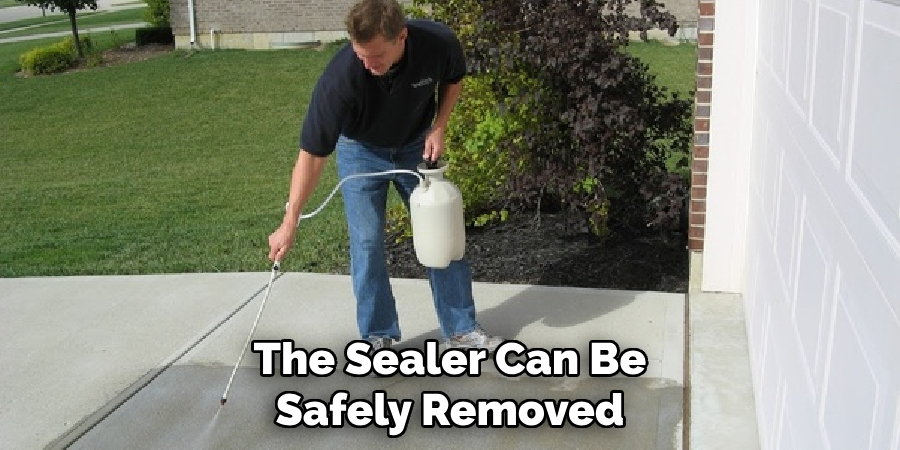
It’s always best to test a small, inconspicuous area of your floor first to ensure that the sealer can be safely removed without damaging the surface. This is especially important if you are unsure of the type of flooring or sealer used. If the test area is affected negatively, it’s best to seek professional help.
Step 3: Apply Floor Stripper Solution
Using a scraper or putty knife, gently scrape off any visible layers of sealer. Then, apply the floor stripper solution according to the manufacturer’s instructions. Typically, this involves diluting the solution with water and applying it evenly onto the surface.
Make sure to work in small sections at a time. Applying the solution to a large area at once can cause it to dry out too quickly, making it less effective.
Step 4: Let the Solution Sit
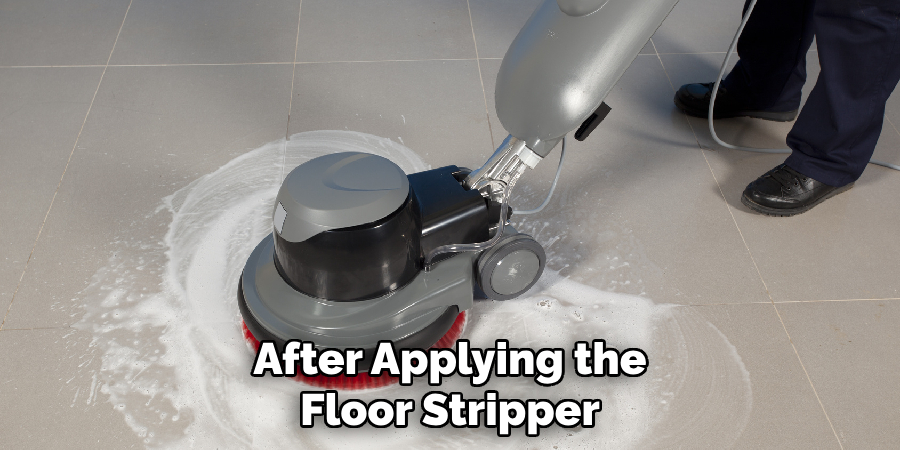
After applying the floor stripper, let it sit for the recommended amount of time. This usually ranges from 10-20 minutes but can vary depending on the product. The solution needs time to break down and loosen the sealer from the floor. If the sealer is particularly stubborn, you may need to repeat this step.
Step 5: Scrape Off the Sealer
Using a scraper or putty knife, gently scrape off the loosened sealer from the floor. Be careful not to damage the flooring surface beneath. You can also use a scrub brush for more difficult areas. If the sealer is still not coming off easily, you may need to repeat the process or seek professional help. Scraping off the sealer may also reveal any stubborn spots that require extra attention.
Step 6: Rinse and Clean
After removing the sealer, it’s crucial to rinse the floor thoroughly with clean water. Any remaining residue can cause damage over time. You can use a mop or sponge for this step, making sure to change the water frequently. Once you’ve rinsed the floor, let it dry completely before moving on to the next step.
Step 7: Apply a Neutralizer
Some floor strippers require you to apply a neutralizing solution after rinsing. This will help balance the pH levels of the floor and prevent any damage. Follow the manufacturer’s instructions for this step carefully. Applying a neutralizer can also help remove any residual sealer that may have been missed during the scraping process.
Step 8: Finish With a Deep Clean
After removing the sealer and rinsing, it’s a good idea to give your floors a deep clean. This will not only remove any remaining residue but also leave them looking shiny and new. You can use a mild cleaner or a mixture of water and vinegar for this step. Once you’re finished, make sure to let the floors dry completely before moving furniture back into the room.
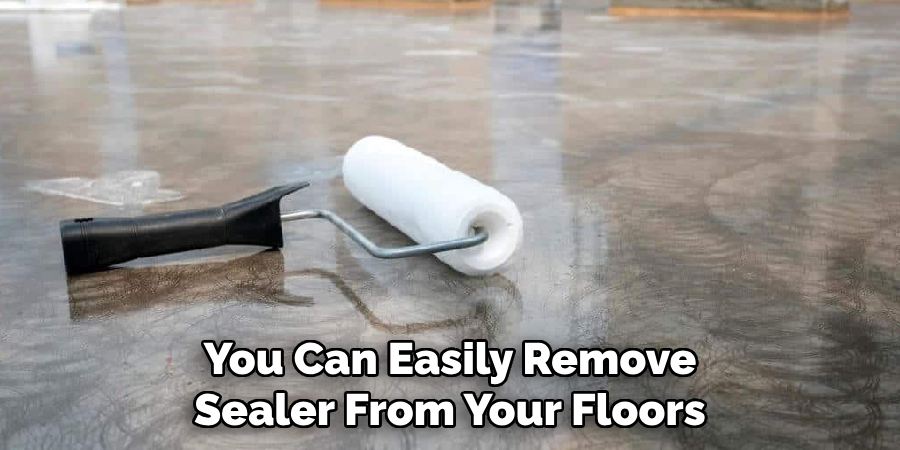
Following these steps, you can easily remove sealer from your floors and restore their natural beauty. Remember to always test a small area first and seek professional help if needed. Regular maintenance is also key in preventing the buildup of sealer on your floors. With proper care, your floors will continue to look stunning for years to come. Happy cleaning!
Additional Tips and Tricks to Remove Sealer From Floor
1. When using a chemical sealer remover, always read the instructions carefully and follow them closely. These products can be dangerous if not used properly.
2. Before applying the sealer remover, make sure to test it on a small, inconspicuous area of the floor first. This will ensure that the product does not damage or discolor your flooring.
3. For tougher stains or buildup, you may need to use a scrub brush or abrasive pad along with the sealer remover. This will help to break down the sealer and remove it more effectively.
4. If using a heat gun, make sure to keep it moving to avoid damaging the floor or creating burn marks.
5. After removing the sealer, thoroughly clean the area with a mild detergent or neutral cleaner and water to remove any residue from the remover.
6. It is important to allow the floor to completely dry before applying a new sealer. This can take anywhere from 24-48 hours, depending on the type of flooring and the humidity level.
7. If you are removing sealer from a large area, it may be helpful to work in sections and remove the sealer one section at a time. This will ensure that the remover does not dry out or become less effective.
8. Always wear protective gear, such as gloves and eye protection, when handling sealer remover or any other chemicals.
9. If you are unsure about which type of sealer remover to use for your specific flooring material, consult a professional for advice.
10. Once the sealer has been removed, consider applying a new sealer to protect and enhance the appearance of your floor. Regularly sealing your floors can help to prevent staining and damage, making future cleaning and maintenance easier.
Following these tips and tricks will help you to successfully remove sealer from your floors without causing any damage or harm. Remember to always handle chemicals with caution, test products before use, and thoroughly clean the area afterward. With patience and proper technique, you can achieve a beautifully restored floor that is free of old sealer. Happy cleaning!
Precautions Need to Be Followed for Removing Sealer From Floor
1. First and foremost, ensure that you wear appropriate protective gear before starting to remove the sealer from the floor. Depending on the type of sealer being used, this may include gloves, safety glasses, and a respirator.
2. Before attempting to remove the sealer, thoroughly sweep or vacuum the floor to remove any debris or loose particles that may interfere with the process.
3. It is important to test a small, inconspicuous area of the floor before proceeding with removing the sealer from the entire surface. This will allow you to determine the effectiveness of your chosen method and ensure that it does not cause any damage or discoloration.
4. If using a chemical sealer remover, carefully read and follow the instructions on the product label. Some removers may need to be diluted with water or require a specific amount of time to sit on the surface before being removed.
5. If using a mechanical method such as sanding or grinding, be sure to take breaks and switch arms frequently to avoid strain or fatigue.
6. Work in small sections at a time, applying the sealer remover evenly and following the recommended wait time before attempting to remove it. This will prevent the sealer remover from drying out and becoming less effective.
7. Use a scrub brush or floor buffer with an abrasive pad to agitate the sealer remover and loosen the sealer from the surface. Be sure to use gentle pressure to avoid damaging the floor.
8. Once the sealer has been effectively loosened, use a mop or wet vacuum to remove the residue and remaining sealer from the floor. Rinse the surface thoroughly with clean water to neutralize any remaining chemicals.
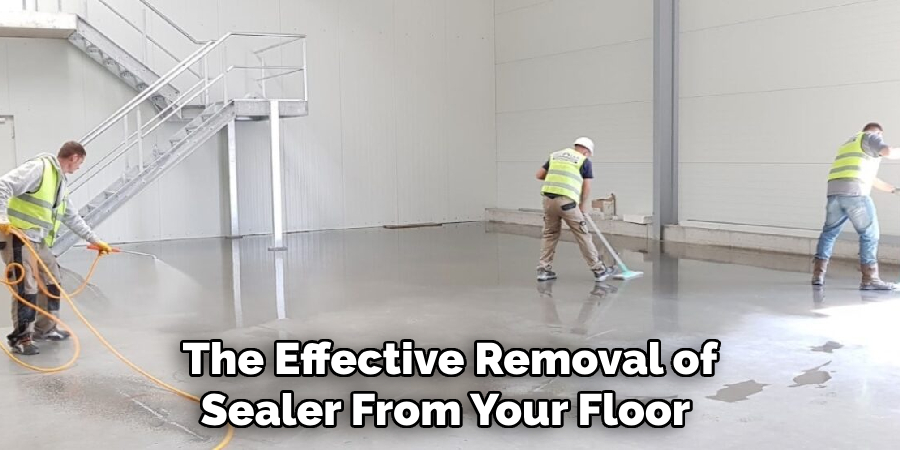
Following these precautions will not only ensure the effective removal of sealer from your floor but also protect your health and prevent any damage to the surface. It is important to always read and follow product instructions and take breaks as needed during the process. Remember to properly dispose of any used chemicals or materials according to local regulations. With proper precautions and techniques, you can successfully remove sealer from your floor and restore its natural beauty. So, it is important to follow these precautions to make the process as smooth and safe as possible.
Conclusion
Knowing how to remove sealer from floor is very important if you want to maintain the appearance, durability, and longevity of your floors. Sealing is necessary to protect the flooring material from moisture, dirt, and stains. However, over time, the sealer can become discolored or damaged due to regular wear and tear.
This not only affects the aesthetic appeal of your floors but also makes them more prone to damage.
Removing the sealer from your floor should be done carefully and with the right tools and techniques. This process may seem daunting at first, but it is not impossible. With the proper knowledge and steps, you can successfully remove the sealer without causing any harm to your floors.
